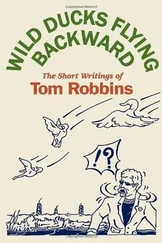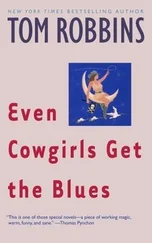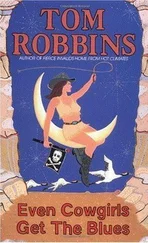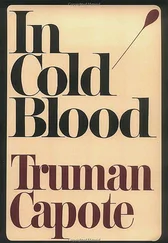When he whirled to face me, looking not merely surprised but incredulous, I introduced myself and tendered an explanation. Wolfe shook my hand heartily, then proceeded to tell me that whenever and wherever he spoke on college campuses, students would invariably ask if he knew Tom Robbins. Now, he said, while no less perplexed, he could at least answer that we’d met. He seemed genuinely pleased.
Any satisfaction I might have taken from this warm and ego-bolstering exchange was immediately chilled when I turned to find William F. Buckley, emperor penguin of the American right, sneering at me with the horror and revulsion he would have displayed had he come upon a bedbug lounging in his satin sheets, reserving particular odium for my ruffled pink shirt and my bow tie with colored sequins. I guess you can’t please everyone.
For all of his talent, all of his glamour, T. K. Wolfe III wasn’t the only interesting student at W&L that year. There was Glenn Allen Scott, who introduced me to the writings of Henry Miller (at the time almost impossible to find in the puritanical U.S.), and who while an undergraduate published a novel that Newsweek compared to F. Scott Fitzgerald’s first book, This Side of Paradise .
There was Walt Michaels, a genuine gentleman athlete with whom I was conversing in the Lexington post office at the moment he tore open an envelope informing him he’d been selected to play in the National Football League. Michaels did play, and later coached for many years the New York Jets.
There was David Gale, who dropped out of school in the middle of his freshman year to go sail a sloop around the world with Captain Dod Orsborne, an intrepid adventurer whose autobiographical Master of the “Girl Pat” had enlivened my fantasy life as a teenager. (In my late twenties, I became romantically involved with a young married woman named Patricia whose husband, poor devil, I would unkindly refer to as “master of the girl Pat.” She never understood the reference, and anyway, shame on me.)
And speaking of Pats, super-evangelist Pat Robertson was a member of W&L’s class of 1950, but while he would go on to contribute mightily to both the commercialization of Christianity and the dumbing down of America, his talents for those black arts hadn’t announced themselves in college. At W&L, Robertson was a nonentity, though in retrospect it seems hardly possible that an ego that immense would have gone unnoticed.
Overall, I’d say that the fellow student whom I’d found most intriguing was a guy whose name long ago vanished down one of my synaptic ferret holes. All I remember of him, and what fascinated me at the time, was that he was expelled for stealing record albums from a Lexington music store — and he didn’t own a phonograph. He seemed content to stack the albums (he was quite prolific) in a corner of his dorm room. Upon his expulsion, it was learned that he’d studied all semester for a Spanish exam — and he didn’t take Spanish.
When my geology professor announced that at our next meeting we’d be going on a field trip, I was pleased: it would be a relief to get out of his stuffy classroom. When he advised us to wear old clothes, pleasure escalated: it would be an even greater relief to officially dispense with coat and tie. And when he told us to bring along flashlights if we possessed them, the outing seemed to promise a modicum of actual excitement, though admittedly it’s a bit of a stretch to think of excitement and geology in the same context. Thoreau advised, “Distrust any enterprise that requires new clothes.” An enterprise that requires old clothes (it usually means manual labor or rough recreation) should raise eyebrows, as well. In this case, I got more excitement than I’d bargained for.
The class assembled in front of Doremus Gymnasium, crossed after roll call the footbridge to the athletic field, traversed the gridiron, jumped a narrow creek (some of us more nimbly than others), made its way through a stand of light woods, and commenced to climb one of the rambling green and rocky hills that surround the Shenandoah Valley and the town of Lexington. We paused occasionally to examine fossils — trilobites and brachiopods mostly — embedded in rock outcroppings, amazed by concrete evidence that the entire Appalachian mountain range had at one time been under the sea. We’d tramped a couple of miles when the professor abruptly halted at a place where two rocks, each about the size of a Volkswagen Bug, abutted. (It could have been a fender bender in Düsseldorf. Or Bedrock.) Between the stone VWs, partially obscured by weeds and a scramble of broken rock, was an opening. A hole. A hole in the ground. Beaming now, the professor disclosed that this unlikely hole was the entrance to a natural cave. Activating his flashlight and instructing the rest of us to line up single file and follow, he dropped to his knees and disappeared down the shaft like some rabbitless Alice who didn’t mind muddying a pinafore.
Terrestrial cavities known as “solution caves” — formed when subterranean limestone is dissolved by acids occurring naturally in groundwater — are numerous in hilly western Virginia. The most celebrated, Luray Caverns, has been commercialized, its spectacular system of colored stalactites and stalagmites (some people can actually remember which is which), its columns, curtains, mirrored pools, etc. attracting fifty thousand visitors annually. Electrically lit, its gentrified entrance is surrounded by such man-made formations as a snack bar, a souvenir shop, and a parking lot. Neither outside nor inside did our field-trip cave bear noticeable resemblance to Luray.
The going was pretty easy at first. The depression sloped gradually, gently downward. It was wide enough not to feel pathologically oppressive, and entertained sufficient weak sunlight to make flashlights temporarily unnecessary. Although we couldn’t stand upright, we could hunker down and duckwalk, and oxygen seemed in generous supply. After fifteen feet or so, however, the cave became darker, more narrow, and we — single file of course — were forced to crawl on hands and knees. Claiming that there was a “marvelous room” ahead, the professor urged us on.
So, on we crawled, following erratically bouncing flashlight beams along a skinny passageway as damp as a sink and as dark as the inside of Groucho Marx’s dog. On and on. Until abruptly there was a chain-reaction pileup of sorts as our chthonian conga line hit a wall, an apparent dead end. Not to worry. The “room” was just on the other side, our leader told us, but to enter it, we had to follow him down a second hole.
This opening was tight. Very tight. Each of us (we were twenty in number, more or less) had to literally squeeze feetfirst through the portal, then slide down into the chamber which proved to be about the size (height and breadth) of a traditional kitchen; that is to say, while it was considerably smaller than the great halls of the Luray Caverns, from a spatial perspective a Thanksgiving dinner could conceivably have been prepared therein, providing, of course, that Julia Child wasn’t doing the cooking. The cave continued for more than a mile, according to our instructor, but this room was as far as our party was going, and it was here that he would deliver his lecture. Once everyone was inside.
Ah, but only about two-thirds of us were so far in the room, and it appeared that the others might not be joining us there. It likewise appeared that we might not be leaving. They were stranded outside the room, we were stranded inside it. Both parties trapped. Trapped by Howie.
As a small child, I referred to my rear end as my “bumptaratum.” The origin of the word was a mystery to Mother and Daddy, and I suspect to me, as well. Maybe it was from a language I’d spoken in a previous incarnation. Or in a parallel universe. Investigation has failed to find the word in any tongue spoken on the planet today. At any rate, Howie’s most distinguishing feature was his backside. He was a big fellow overall, though not dramatically so, except between his waist and his thighs, which is to say, that his gluteus was maximus. So protuberant was his posterior that it simply would not fit through the vertical opening. It, in fact, became wedged in the passage, and the more he struggled the more firmly it lodged. There he was, legs dangling at eye level on one side, my side, of the opening, his upper body flailing on the other side; students of Geology 101 trapped at both ends, and all I could think was, I’m gonna die down in this black hole because of Howie’s bumptaratum.
Читать дальше












